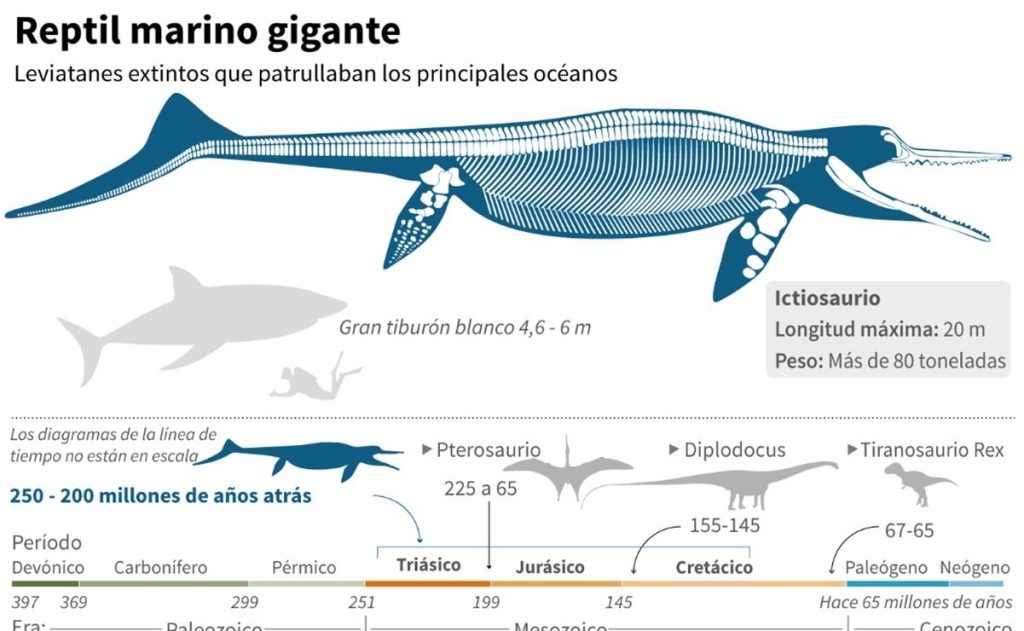The fossil from a pregnant female ichthyosaurbaptized as “Fiona”, was found in a glacier of Chilean Patagonia It became the first extinct marine reptile of this type to be fully discovered, its discoverers reported Tuesday, May 10.
The discovery, which was published by the University of Magallanes on Tuesday, represents a pioneering expedition carried out between March and April of this year headed by Chilean paleontologist Judith Pardo, who was able to fully discover and excavate the fossil with the support of an international team.
On the Tyndale glacier, located in Torres del Paine National Park, in southern Chile, Fiona was found four meters long and was the only recorded pregnant female on the planet since the early Cretaceous period, between 129 and 139 million years ago. year.
Read also: Admission to the 2022 Public Policy Degree in CIDE has been suspended
“Fiona is complete, articulated and has fetuses in gestation. His recovery will provide information regarding his species for paleobiology, about embryonic development, and about the disease that affected him during his life,” Pardo explained.
The academic, from the University of Magallanes’ GAIA Research Center in Antarctica, added that the remains have been moved to the Paleontology Laboratory of the Natural History Museum of Rio Seco, in Punta Arenas (at the southern end), where they will be temporarily stored for future use.
In search of marine reptiles
Ichthyosaurs were marine reptiles that lived all over the planet during the Mesozoic Era, between 250 and 90 million years ago.
Their body was similar to tuna, similar to today’s dolphins, they had lungs, they were viviparous and they are considered the animals that have reached the highest degree of adaptation to the marine environment.
Fiona, in particular, was discovered by Dr. Pardo in 2009, during the last day of a paleontological expedition to the Tyndale glacier, and then was funded by the German government, while she was developing her doctoral thesis at the University of Heidelberg.
Read also: Motherhood and feminism coexist today
Subsequent excavations were made thanks to the allocation of contributions from the National Agency for Research and Development of Chile (Anid), according to the statement.
The volume of research and the complexities associated with the terrain have attracted scientists from all over the world this year, especially women, such as the famous Dr. Erin Maxwell, Head of the Department of Marine Reptiles at the State Museum of Natural History in Stuttgart (Germany) or Christina Jasko, the museum’s restorer itself.
Chilean Miguel Caceres, director of the Rio Seco Museum of Natural History, and Hector Ortiz, biologist, as well as paleontologist Jonathan Colusa, of the Felix de Azara Natural History Foundation (Argentina), among others, also participated.

“Beeraholic. Friend of animals everywhere. Evil web scholar. Zombie maven.”




:quality(85)/cloudfront-us-east-1.images.arcpublishing.com/infobae/IQJTX3VFRZBBJFIHZMSS4QXC3I.jpg)

More Stories
Sun, health and much more! Discover all its benefits
What are the first jobs that artificial intelligence will replace?
NASA MSR Program: Bringing samples from Mars in 2040 is not an option